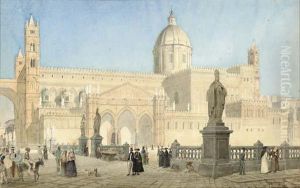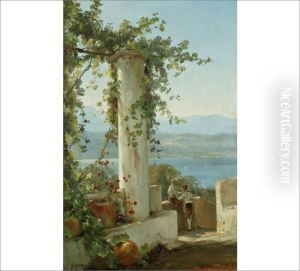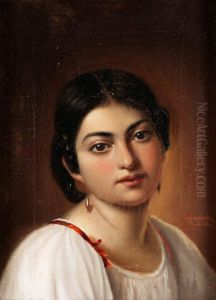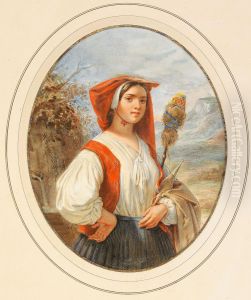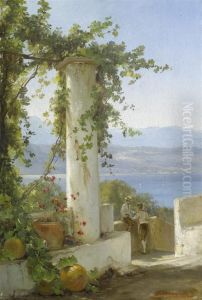Fjodor Andrejevitj Bronnikov Paintings
Fjodor Andrejevitj Bronnikov was a prominent Russian painter born on December 17, 1827, in the village of Shiryaevo in the Samara region of Russia. His artistic journey began at the Academy of Fine Arts in St. Petersburg, where he studied from 1847 to 1853. Bronnikov showed an early talent for art and received recognition for his skills during his academic years, earning a gold medal for his work. After completing his studies, he was awarded a scholarship to further his artistic education in Italy.
Bronnikov spent a considerable part of his life in Italy, particularly in Rome, where he was deeply influenced by the rich artistic culture and the works of the Italian Renaissance masters. During his time in Italy, he became part of a community of Russian artists and intellectuals residing there. His art primarily focused on historical and mythological themes, with a particular emphasis on classical antiquity. Bronnikov was known for his meticulous attention to detail and his ability to convey the textures of fabrics and the subtleties of the human form in his paintings.
One of Bronnikov's most famous works is 'The Sick Child' (1864), which highlights his skill in capturing human emotion and the drama of everyday life. His other notable works include 'Phryne at the Poseidonia in Eleusis' (1883), which showcases his fascination with ancient Greek culture and his talent for depicting historical scenes with accuracy and emotional depth.
Throughout his career, Bronnikov maintained a connection with his homeland, contributing to the development of Russian art. His works were exhibited in Russia and received accolades, enhancing his reputation as an artist both at home and abroad. Fjodor Bronnikov's contributions to art were recognized by the Russian Academy of Arts, which honored him with the title of academician.
Bronnikov's artistic legacy continues to be appreciated for its reflection of the academic art traditions of the 19th century and its embodiment of the cultural exchange between Russia and Italy. His paintings can be found in various museum collections, including the Tretyakov Gallery in Moscow and the Russian Museum in St. Petersburg.
Fjodor Andrejevitj Bronnikov passed away on October 22, 1902, in Rome, leaving behind a body of work that continues to be studied and admired by art historians and enthusiasts. His commitment to classical subjects and his influence on the Russian art scene of the time have cemented his place in the history of 19th-century art.
